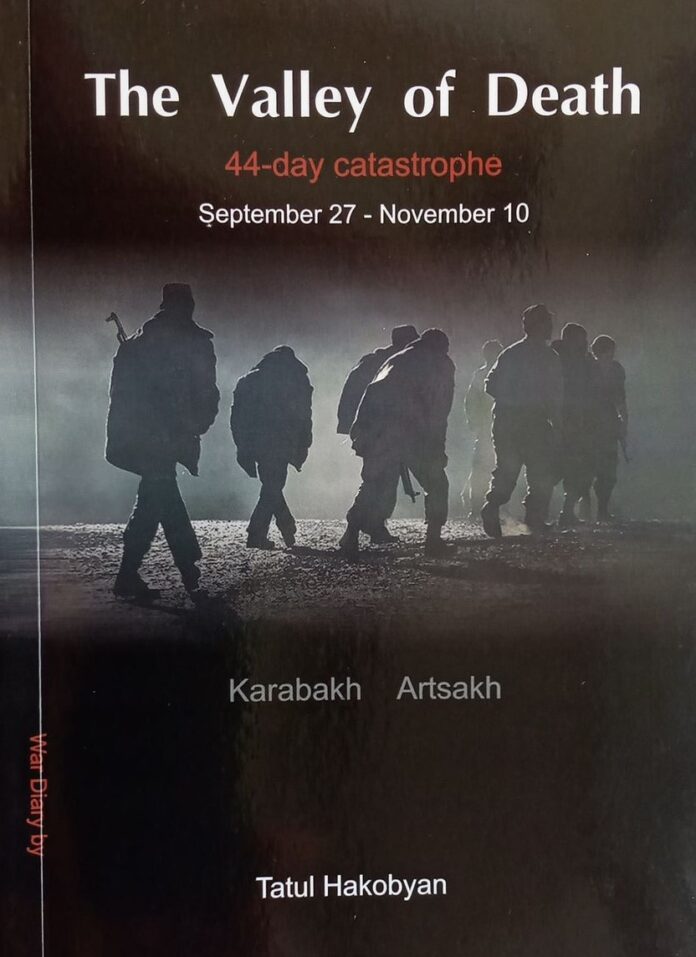Note – This article was published in The Valley of Death by Tatul Hakobyan. The article was first published in 2017.
How do we imagine finding a solution in Nagorno Karabakh conflict and what does it mean? As a beginning, here is a precondition for a viable peace in Karabakh – unless there is a solution which is acceptable for all three parties to the conflict, there is no chance for a sustainable solution in Nagorno Karabakh conflict.
For official Baku and Azerbaijani public, the formula for a solution in this conflict is “status quo ante”. This means that Azerbaijan sees the solution in returning to what the situation was in 1988 and/or Baku can accept Nagorno Karabakh within its territorial integrity with possible high level of self-governance. In Artsakh and Armenia, solution to this conflict, especially after 2016 April war, is strengthening of existing status quo.
When Armenia’s third president Serzh Sargsyan was in negotiations with Azerbaijanis in Geneva or Kazan, he was not discussing “status quo ante” or strengthening of existing status quo in Artsakh. The negotiations were somewhere in the middle of these two approaches. Sargsyan has been transparent about his understanding of conflict resolution in Nagorno Karabakh, which in short would be the following: If/when Artsakh is recognized as an independent state, he would be willing to make territorial concessions to Azerbaijan.
One can argue, that Serzh Sargsyan is negotiating with Ilham Aliyev to buy time and, in reality he has no intention to return territories to Azerbaijan. On the other hand, Ilham Aliyev could be imitating negotiations, also to prolong the process, in order to be able to attack Artsakh and return to “status quo ante” militarily.
If we try to set aside maximalist approaches, a true solution would be a negotiated document with the signatures of all three parties involved in this conflict. After this becomes possible, a more complex and dangerous process should start and that is the implementation phase of a negotiated document on the ground.
It is clear that the parties to the conflict are far from reaching an agreeing even about the basic principles of a possible solution, thus it is unlikely to expect a breakthrough at the negotiations, in the near future. Today, there is simply no positive ground for a negotiated solution in Nagorno Karabakh conflict.
Even if we imagine a miraculous solution, which will be fair, acceptable to all parties, with face saving elements for domestic politics, considering the magnitude of existing war rhetoric and hate speech within the societies, it will be impossible to implement a peace deal. Hence, before we talk about any solution, currently non-existent environment of tolerance and peace is a must.
There is also a need for three equally important other preconditions and levels, which need to be present in order for a solution to become possible in Nagorno Karabakh conflict.
First level – geopolitics. As much as we may claim that the keys to the solution of Nagorno Karabakh conflict are in Stepanakert, Baku and Yerevan, harmony between Russia, the United States and the European Union is of utmost importance. Currently, Russia and the West are at a diplomatic war, thus it is impossible to imagine serious cooperation within Nagorno Karabakh context. Moreover, depending on particular moment, one or the other of the big players may become spoilers for the peace process based on their interests.
Level two – the elites. In 2011 when Armenia’s third president Serzh Sargsyan was announcing about his willingness to return 7 territories to Azerbaijan, was he ready to implement this promise on the ground? Meanwhile, if agreed upon, would Azerbaijan’s president Ilham Aliyev sign under a document, by which he would accept a referendum for the future status of Artsakh if territories were returned under his country’s control? If the answer of these two questions is yes, it means that the two leaders have the courage to face the political and other consequences of these decision.
Third level – the societies. Are the Armenian and Azerbaijani societies ready for a solution. So long as most or all media organizations are tightly controlled by the governments, in case of Azerbaijan fully, while Artsakh and Armenia have relatively better media environment, but cannot be qualified as free, it is hard to talk about public opinion objectively.
We can also discuss other levels for conflict resolution in Karabakh, such as the Turkish factor. However, in my view, if there is an agreement on the three levels described above, we can talk about a possibility of a breakthrough or a solution.
At the moment, this kind of goal does not seem to be in the agenda of neither the societies, nor international players. Meanwhile, the societies continue to pay the price for the existing status quo and that prices are the lives of our 18-20 years old young soldiers.
October 25, 2017












